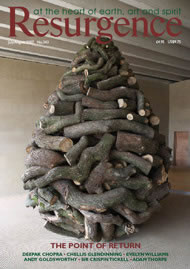THE END OF THE WILD Stephen M. Meyer
The MIT Press, USA, 2006, £9.95 Humanity now drives biological systems. Nowhere on Earth is remote any more and accelerating human pressures on the landscape threaten to overrun even specialised habitats. Hundreds of formerly well-established and psychologically important organisms (such as elephants, owls, hawks, gorillas and whales) are now spilling into the ranks of the extinct and soon-to-be extinct. Climate change and economically induced global warming are powerful agents of human selection that undermine biodiversity; the wild will give way to the predictable, the common and the usual. Aesthetics and economics rather than ecology and biology are the deciding factors, and economics seems always to trump ecology. In this short but fascinating book, Meyer argues that the end of the wild is about us: our cultural norms, our values and our priorities. The end of the wild is about how we have chosen to live and how those choices relate to the world around us; and how we need to change individually before we can change globally.
NOT BUYING IT Judith Levine
Simon & Schuster, UK, 2007, £7.99 Consumer choice is democracy, we are told. In America, after 9/11, it became a patriotic duty. As Judith Levine heaved her remaining shopping bag to dry land one stormy Christmas Eve, she silently announced her conscientious objection: “I’m not buying it!” As our consumer goods grow ever cheaper, our comfortable existence requires that elsewhere life is not so pleasant. Worldwide, workers, some of them children, pay for our cheap consumer items with miserable wages and working conditions, their air and rivers choked with chemicals. In this enjoyable and surprisingly interesting book, Levine tells the story of her and her husband Paul’s year of ‘not buying it’. Cleverly woven into the story of their personal journey, Levine feeds us philosophy and economic theory, and offers an incisive analysis of the marketing tactics which are used to keep us buying. In Not Buying It Levine concludes that, paradoxically, by buying less, she has more.
MARKET SCHMARKET Molly Scott Cato
New Clarion Press, UK, 2006, £13.95 Molly Scott Cato’s main theme is that climate change is a direct consequence of the economic system called capitalism and its addiction to growth. Rather than ending global inequality, globalisation is in fact creating it. Cato maintains that the essence of the capitalist market is ‘commodification’: the turning of human activities and natural resources into commodities to be bought and sold in a marketplace that is driven by inequality and poverty. The survival of poverty is essential for ideological reasons: the maintenance of a felt experience of insufficiency is essential to any capitalist version of development. In the late form of capitalism, profit matters to the exclusion of all else, including the product. The dislocation of the business community means that corporations are able to operate both their buying and their selling activities in a footloose manner, paying no regard to the social and political consequences in the countries in which they operate. The message of this book is that, if we find the economic system we have inherited unappealing or distasteful, we should use our imagination and our ingenuity to come up with something better.
LAND ART Ben Tufnell
Tate Publishing, UK, 2007, £18.99 What makes a person decide to walk ten miles in a straight line across Exmoor and call it a work of art (Richard Long’s A Ten Mile Walk, England)? We only know it is art because someone has designated it as such. In his book Land Art, Ben Tufnell puts land art into its historical context, using as examples key participants from its origin in the 1960s to the present day, the main theme being the vast area which the discipline of land art covers: an almost impossibly wide breadth of fields from architecture to astronomy, to horticulture, to meteorology. Some of the proponents of this art undertake works on an unimaginable scale: James Turrell, for example, who is reshaping a crater bowl and excavating the tunnels and chambers of an extinct volcano. At the opposite end of the spectrum is Francis Alÿs’s The Leak, where he deliberately gets lost and then retraces his steps along a trail of paint tipped from a punctured can he had carried with him. Land Art leaves me with more questions than answers – the demarcation lines between the creative disciplines have become obscure.
EXTREME WEATHER Peter Bunyard







